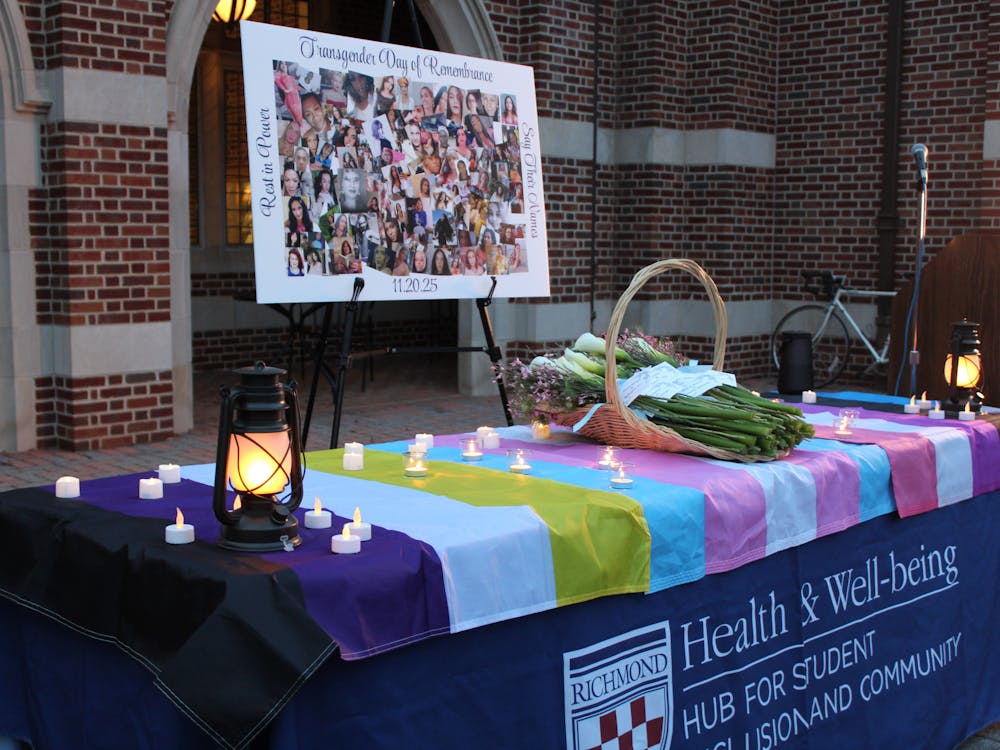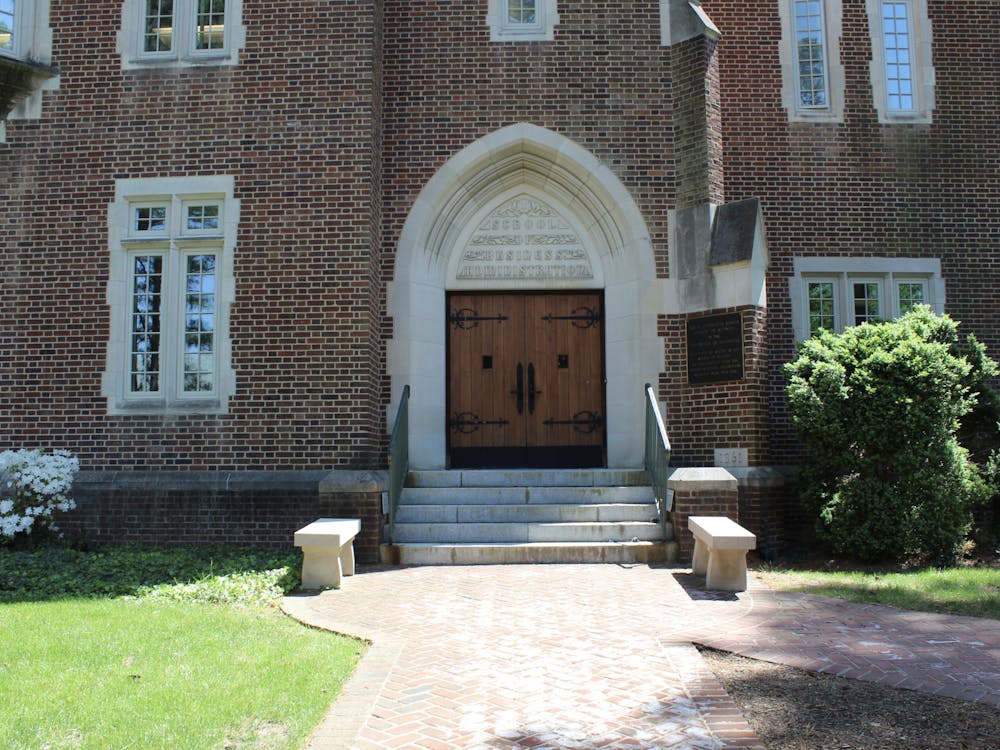Richmond's major mass transit company is considering eliminating the only bus route between the university and downtown because not enough people use the service.
Greater Richmond Transit Company conducted an 18-month analysis starting in 2006 that labeled seven "problem" bus routes in its system, including Westhampton Route 16. The transit company proposed shutting down the routes to reduce costs after the city council cut the company's funding in April.
In several categories, the route was classified as a "problem," mainly because fares weren't contributing enough to compensate the route's overall operating cost.
The analysis showed Route 16 costs $912,300 to operate, but gained only $149,100 in revenue -- a $763,200 deficit that put the route about 40 percent worse than the average.
A decision to cut the service would impact 115 employees--at least 36 of whom are in Dining Services--and would hinder students' abilities to travel to "University of Richmond Downtown," the school's new pro bono office, and cause difficulties for a handful of inner-city students who commute to the university as part of a work program.
City council's Land Use Housing and Transportation committee met July 22 to discuss GRTC's proposal, but is delaying its decision until at least November. The full city council will vote on an ordinance that, if passed, would give GRTC the authority to cut certain routes, but would not require the action.
"This was never intended to go through a quick process," said Bruce W. Tyler, the councilman that represents Richmond's West End.
He has been studying GRTC's proposal, and said the route would have to become more efficient. He plans to meet with GRTC officials before he makes a decision, he said.
Carl Sorensen, associate vice president for human resources at the university, spoke on behalf of the school at the July 22 meeting. He said he had asked GRTC to allow more time to study ridership characteristics.
Nearly all GRTC routes operate at a deficit and rely on public funding to sustain the company's $423 million budget.
"All buses in the system lose money," Sorensen said, "but ours falls just below the threshold--it's the best of the worst."
He argued that the data GRTC presented is two years old and that he had seen an increase in ridership from May to June, bucking a trend of declining ridership seen in previous years. GRTC's records show that the number of rides on the route this year increased from 12,728 in May to 12,795 in June.
Enjoy what you're reading?
Signup for our newsletter
The slight increase is attributable to an initiative the university began in May that offered more than 150 free bus passes to school employees, Sorensen said.
Those who regularly ride the Route 16 bus argued at the meeting that they needed the route to commute and buy groceries and medicine. Disabled people argued it was their lifeline to get around the city, Sorensen said.
University officials are optimistic the route won't be shut down, so there is no plan for university action if the route is eliminated, Sorensen said.
"We're looking for ways to make it sustainable," he said. That could include operating the bus only during peak hours, switching to a smaller bus or connecting to a new stop, such as St. Mary's Bon Secours Hospital on Glenside Drive, to increase ridership, which Sorensen said would probably be the most difficult move for GRTC.
GRTC chief executive officer John M. Lewis Jr. said the issues with Route 16 were financial. He said he would prefer that the route continue, but with a $2.5 million to $3 million budget deficit in the transit system, there weren't many alternatives.
Ways to reduce expenses include eliminating services, raising fares or receiving more money from the city. Any of these decisions must be approved by the council.
Lewis said the increase in ridership from the university's bus pass program was not enough to offset costs.
"Putting the driver behind the wheel and putting fuel in the vehicle are the biggest costs," he said.
In 2006, GRTC had a fixed rate contract for gas at $1.40 a gallon, but this year's contract--set to expire at the end of April 2009--put the gas price at $2.62 a gallon, and 2009 prices are likely to be even higher, Lewis said.
GRTC is considering operating the bus only during peak hours, but Lewis said he wasn't convinced this would have a broad impact on cutting costs.
"If I don't cut Route 16, then I have to go to the next highest route, which would impact more people," he said.
Both Sorensen and Lewis agree that increasing ridership is the best way to save Route 16. "Students need to ride the bus," Sorensen said, but he and Lewis acknowledge the route isn't designed around the university. Driving is more convenient for most students.
Despite the university's largely residential student body, Lewis proposed drawing up a contract similar to the one Virginia Commonwealth University has with GRTC, where the university pays for several bus routes that specifically serve the school's community.
Sorensen said he had been working with other employers whose staff use Route 16, including St. Catherine's School and the Country Club of Virginia.
"I would love for the riders to convince the council members that public transit is worth investing in," Lewis said. "What we're seeing here is a microcosm of transportation problems--the lack of investment in public transportation throughout the nation. People are looking for alternatives that just don't exist."
The analysis GRTC conducted recommended changes should the route remain in existence. The findings noted that buses on Route 16 exhibited poor on-time performance. It also suggested that one drop-off location on campus be specified instead of the two currently in use.
A proposal to offer students free bus passes was also being discussed, said John McCulla, the university's coordinator of community relations.
"Conditions have changed with high fuel prices, the economy has taken a downswing, and the university has offered its own mass transit benefit [to employees]," McCulla said. "We had no knowledge they were considering cutting the line."
In a July 18 e-mail to faculty, staff and students, President Edward Ayers said the administration had been working with city officials to resolve the problem.
"The university will continue to work with our GRTC partners to find ways to preserve this important bus route," Ayers wrote. "We have been working with city officials to reiterate the university's commitment to partnership with GRTC and to share our concerns about any proposals to eliminate Route 16."
The route connects the University of Richmond to downtown via Grove Avenue, with stops at the Shops at Libbie & Grove, the Virginia Museum of Fine Arts, Retreat Hospital, Virginia Commonwealth University's West Campus and Grace Street.
Support independent student media
You can make a tax-deductible donation by clicking the button below, which takes you to our secure PayPal account. The page is set up to receive contributions in whatever amount you designate. We look forward to using the money we raise to further our mission of providing honest and accurate information to students, faculty, staff, alumni and others in the general public.
Donate Now


